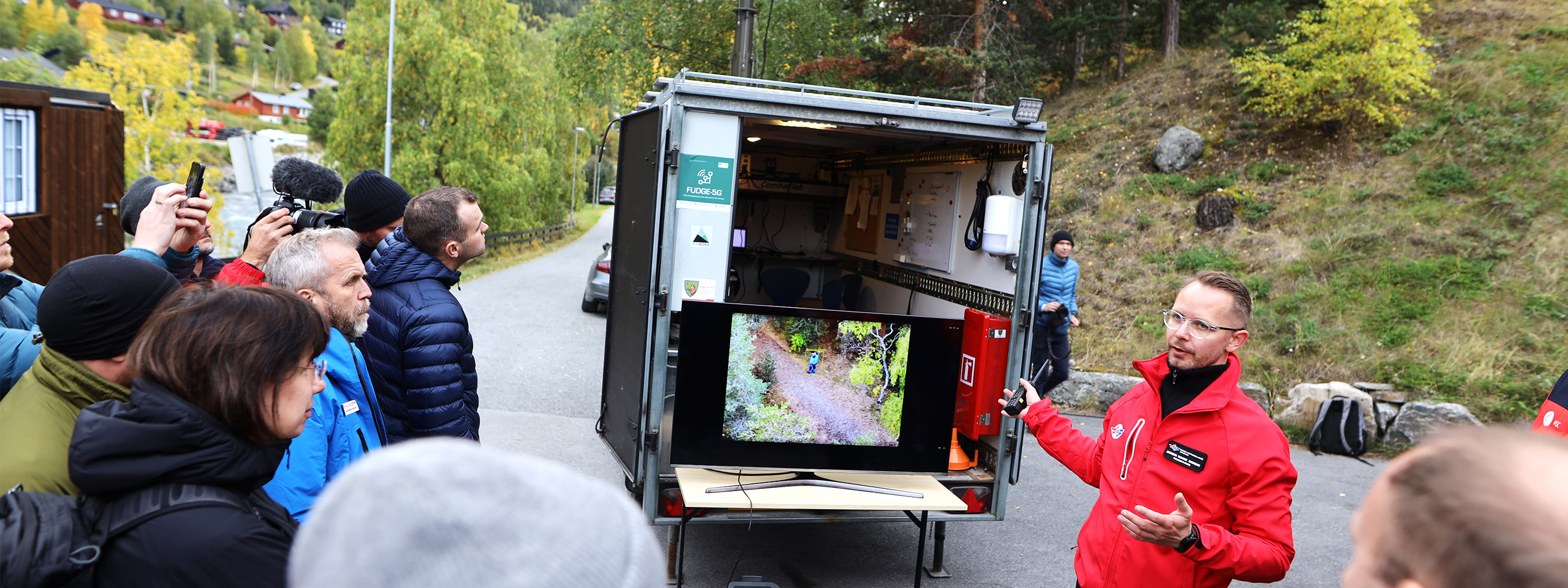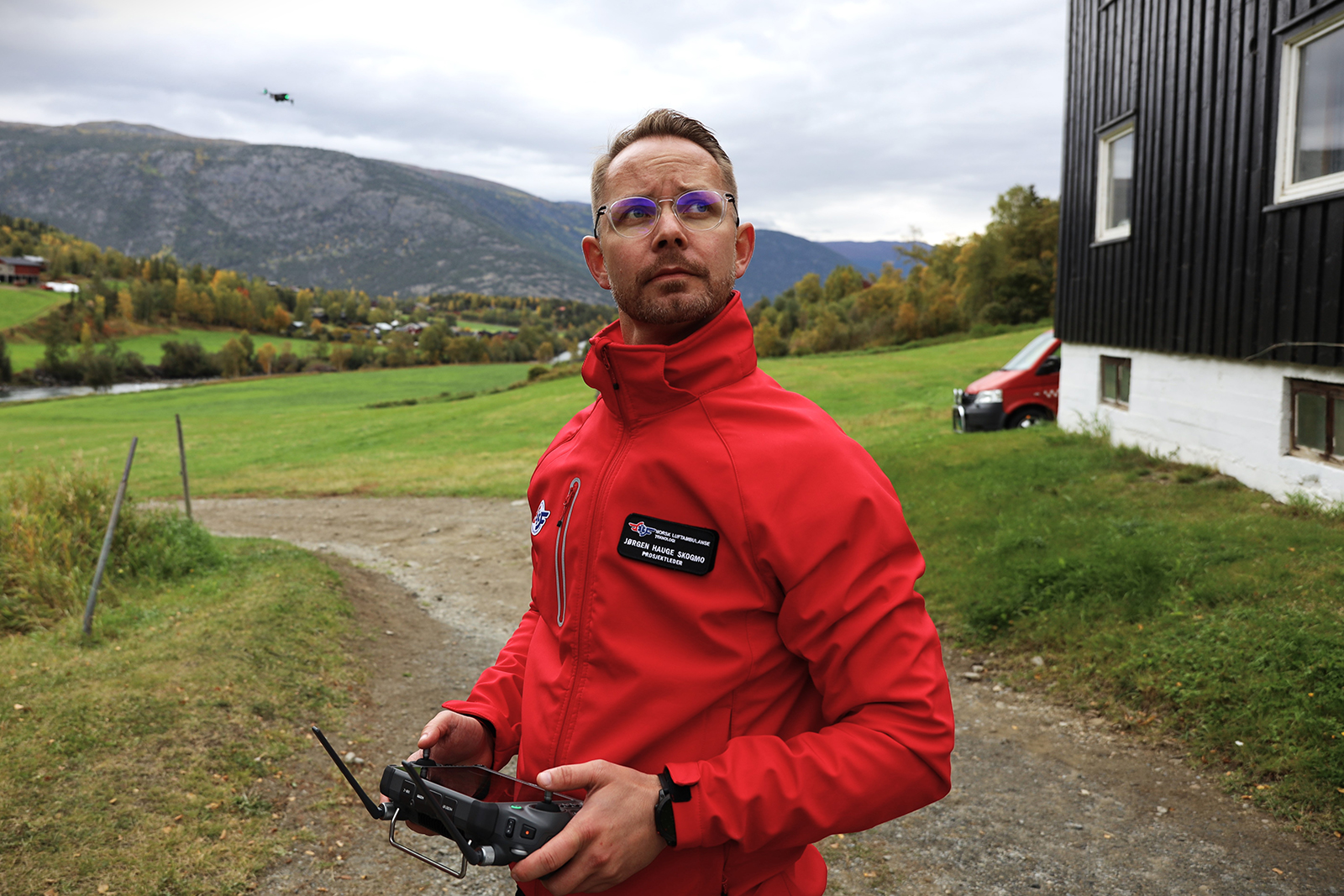
When every second counts: Mobile 5G solution could be a game changer in emergency situations
A new mobile 5G Network on Wheels from Telenor demonstrates how cutting-edge digital technologies play a vital part in safeguarding people in search and rescue operations. First responders say it symbolises a “quantum leap in the use of technology in emergencies.”
Jørgen Hauge Skogmo of the Norwegian Air Ambulance has just received bad news. In Fossbergom, a small Norwegian village neighbouring some of Northern Europe’s highest peaks, a person is missing in difficult terrain. Time and efficiency are – as always in search and rescue (SAR) missions – crucial.
The good news is that the operation is an exercise, or a demo, to be precise. And if the situation was real, which isn’t unlikely given that the number of SAR operations in Norway is increasing [1], he would, in this particular operation, have a new 5G powered asset at his disposal.
“We have demonstrated how a new standalone private network on wheels can provide first responders with better situational awareness based on Artificial Intelligence (AI) processed video of the disaster scene transmitted from 5G powered drones. The processing helps operators detect potential victims in need of assistance. This enables rescue operators to respond more effectively to the emergency, thus increasing the chances of saving lives,” says Skogmo.
[1] Figure 26 and 27
Did you know?: Telenor introduced the world's most diverse multi-vendor 5G Standalone to date in 2021
NOW saves precious time
At the recent ULENDT., an interdisciplinary training camp for Norwegian SAR operators, Telenor with Intel and the Norwegian Air Ambulance demonstrated the use of a proof-of-concept 5G Network on Wheels (NOW) in a disaster scenario.
“The idea is that when a crisis occurs, the 5G Network on Wheels is driven and deployed in the vicinity of the rescue operation area. A drone is sent out from the vehicle and transmits video back to the mobile control room continuously using a private 5G network,” explains Kashif Mahmood, Director, Next Generation Platform in Telenor Group.

For first responders, a reliable network that allows for coordinated operation is crucial.
“A private network which is implemented as a ‘slice’ in the commercial network where all the relevant authorities can participate provides exactly that,” says Mahmood.
Inside the NOW control room, the video is processed by an Intel-developed Machine Learning algorithm that is trained to recognise relevant elements, such as humans, dogs, and cars.
“We believe the video analytic solution will help drastically reduce the time search and rescue teams spend searching for people. From a tech perspective, we also hope the solution can highlight the positive impact AI can have on a societal level,” says Thomas Melzer, Data Center & AI Lab Manager – Intel.
Also read: A collaboration arena in Norway aims to accelerate the uptake of AI in businesses

Freeing up capabilities
“Although the 5G Network on Wheels is on the proof-of-concept stage, I believe we, in essence, have made a quantum leap when it comes to the use of technology in search and rescue operations,” proclaims Skogmo.
For him, the answer to the increasing emergency events and emergency calls is not the unrealistic scenario of buying a hundred new ambulances annually.
“If we instead utilise new technologies, we can work faster and thus earn precious time on patient’s and victim’s behalf. Innovations such as the 5G Network on Wheels can also free up valuable operational capabilities. We don’t have to fly helicopters on every call, we can use the drones to get a much better situational awareness.”
Learn more: Mobile technology and data can help predict and prevent the spread of diseases

Award-winning project
The NOW has been developed as part of the EU funded FUDGE-5G project. The solution has also gained recognition from the industry, bagging the Best use of advanced technology award at the International Critical Communications Awards 2022.
“The award is a testimony to the work we have done on private 5G networks in Telenor Research and Innovation over the last few years. The project exemplifies how digitalisation can play a role in safeguarding people,” says Patrick Waldemar, Vice President of Telenor Research and Innovation , who adds that Telenor’s research arm aims to continue exploring the features of private 5G networks in upcoming EU projects.
Telenor Norway, which recently showcased how private 5G networks can play a key role in covering the Norwegian Armed Forces' unique communication needs, says the NOW proof-of-concept is a good example of the range of possibilities that lies in the future emergency networks.
“The ability to quickly establish a common situational awareness after a disaster has occurred is of great importance for the first responders. With this technology, valuable information can be shared and lives can be saved. This will be one of the many advantages for Next Generation Nødnett in Norway, which will base its operation on the commercial mobile networks,” says Siri Kalager, Vice President Critical Communications, Telenor Norway.
Read more: A breath of fresh (AI)r - how cleaning data can solve one of the globe's dirtiest health issues

About Telenor Research and Innovation:
For more than 50 years, Telenor has invested in a dedicated research area to help the company prepare for and leverage emerging technologies, as well as customer, organisational and regulatory trends. Telenor Research and Innovation consists of a team of experts who take a science-based approach to solving some of the most intricate problems facing telecommunications today – providing insight and guidance to top management for more informed decision-making.
Contact
Stian Kristoffer Sande
Communication Manager
Telenor Group